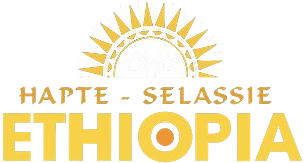Ethiopian Traditional Costumes Collectible Prints
H.E. Mr. Hapte-Selassie dedicated his professional life to promoting Ethiopia by highlighting his country’s rich history and diverse culture. Hapte-Selassie understood that Ethiopia’s economic development necessarily entailed cultural change. As part of an effort to capture and preserve the country’s different attire. In this series, a selection of fourteen collectibles prints titled “Ethiopian Traditional Costumes” celebrate Hape-Selassie’s efforts to enrich our daily lives by safeguarding Ethiopia’s heritage and contributing to its appreciation by its people and the world.
The Significance of Ethiopian Traditional Attire
The costumes of the Ethiopian people are as varied and interesting as the population itself, reflecting ancient and modern trends in decoration, the fanciful as well as the practical.
Beyond woven textiles, Ethiopia’s diverse ethnic groups incorporate a variety of materials and adornments into their dress. Certain rural communities craft clothing from animal skins, while others use body paint, tattoos, and piercings as cultural expressions. These elements, whether through textile or body adornment, are deeply tied to the identity and heritage of each community.
Ethiopia is home to nearly 80 ethnic groups, each with its own distinctive traditional clothing that reflects its identity, heritage, and environment. While the northern highlands are known for the “Habesha Libs”, a white woven cotton garment embroidered with intricate patterns, other regions display a wide range of styles that showcase the country’s cultural diversity. In the highlands, the shamma is a staple garment—a long piece of cotton fabric that serves as both a body covering and a headwrap. It is often worn over modern regions such as skirts or trousers and remains a common sight in Ethiopian fashion, particularly in urban areas, where its variations can be seen on the streets. Ethiopian women frequently wear the kemis, a dress of varying lengths adorned with colorful woven borders and intricate embroidery. Additional garments commonly worn across different attire include the netela, a lightweight cotton shawl; the kutta, a heavier version of the netela; the gabi, a thick, blanket-like woven cloth for warmth; and the barnos, a traditional cape.
Ethiopia’s traditional clothing is not just functional but also a vibrant reflection of its people’s artistry, history, and way of life. Whether seen in bustling cities, remote villages, or ceremonial gatherings, the rich tapestry of Ethiopian dress remains an essential part of the nation’s cultural fabric.
A love of ornamentation ruled by a natural affinity for beauty leads the Ethiopians to adorn themselves in memorably dramatic fashion. Timeless symbols such as the cross and the lion’s mane have long been used in decoration. Tattooing of the face, neck, and hands, and elaborate traditional coiffures, though no longer the rule with sophisticated city dwellers, are still seen everywhere among country folk. A profusion of jewelry, whether crafted by skilful smiths of gold and silver or made in the villages of cowrie shells and leather, base metals and colorful beads, is an integral part of the national dress. Rain or shine, umbrellas richly covered with embroidery and brilliants are held above the heads of priests and deacons.
Briefly, in dress as in political, cultural, and religious traditions, the Ethiopians follow a heritage that is vital, colorful, and unique. One of the great treats awaiting is the ever-changing pageant of costume that will pass before you when walking through the cities or driving about the countryside, witnessing a religious ceremony or taking part in a public celebration. Understanding the history and significance of these garments will greatly enrich one’s experience and insight into Ethiopian society.

Click on the images to see more information.
We appreciate your support for the Ethiopian Traditional Costumes Prints .
100% of the proceeds go towards bringing to you Hapte-Selassie design projects.
The collection of 13 posters + 1 bonus poster for $115 or any 2 different posters for $24, free shipping within the US.
poster size: 12¾ inches x 19 ½ inches

